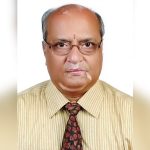
The International Wire & Machinery Association (IWMA), founded in 1970, has gone on to become one of the most influential corporate membership association for the wire, cable and wire product industries with a primary function to promote new technology and growth. As a non-profit trade association, IWMA has long been active in synergizing the target industries through its educative meets and conferences.
The IWMA considers that one of its primary functions is to promote new technology, education and growth in wire and cable industry. Its conferences and educational seminars provide an international forum for the exchange of technology, regular focused meeting places for the industry and excellent reference sources from its library of past papers.
Through both the IWMA’s Educational Trust Fund and its Travel Award scheme, it actively encourages the gaining of new skills and experience for future rising stars in the industry. IWMA’s Walter Niehoff Scholarship provides funding to train an individual supported by a member company.
Wire & Cable India recently had a brief chat with the newly appointed Ms. Amanda Shehab, Chairman, IWMA to know more about IWMA’s presence, priorities, and prospects. Excerpts:
Wire & Cable India: How do you feel on being accorded the new role by the association?
Amanda Shehab: It is an honour to become chairman of the IWMA. Throughout my time on the executive board I have admired the commitment of the association and its consistent focus on putting the industry first. I look forward to continue to deliver these values and the further growth of the organisation.
WCI: Please share with us the brief history of the association and how much it has been able to live up to its own vision during last more than four decades.
AS: The IWMA was founded in 1970 as a trade association to represent the interests of companies involved in the production and processing of wire and cable products. In the early years, the IWMA was instrumental in the establishment of wire exhibitions around the world, without which the industry would be in a different place today.
The IWMA has always had a strong technical focus to promote manufacturing excellence. This is apparent in its organisation through the years of more than 40 technical conferences around the world.
WCI: Are you aiming any policy shift in the working of the association to stay relevant in today’s highly dynamic market scenario?
AS: The IWMA’s mission to promote and support the activities of our member companies, and the industry as a whole, is a noble one. This will not change, but we are working on a strategy to allow us to deliver services more effectively using modern platforms. For example, we are investing in a new delivery system for industry education and training that is relevant and can reach a much wider audience.
WCI: You, in your mind, must have had a list of few things to change or alter before stepping in to the role. Now that you are finally here, what are you going to do about it?
AS: In the past few years the IWMA has been through some re-structuring processes, including re-location to new dedicated offices. The organisation is now as strong as ever and ready to take on some new challenges. The IWMA is host to a vast pool of industry specific technical expertise, and one of the new challenges will be to make this expertise more freely available to our members.
WCI: The founders once realized that wire and cable sector deserved more attention than it had. Do you think that the existence of IWMA for long on the scene has been able to bring that much needed attention to the industry?
AS: The IWMA was instrumental in the founding of the first truly international wire show, which resulted in the Wire Düsseldorf we know today. Wire Düsseldorf, in 2014, attracted 1300 exhibitors, and 38,000 visitors. The success story of wire Dusseldorf is repeated across 4 cotenants. I think you can agree that this has very much raised the profile of the industry. The IWMA is proud to be part of this success story, but this is only one of the many success stories the IWMA has been and will I am sure be part of in the future.
WCI: How does the association see the growth trends in the wire and cable manufacturing in coming times?
AS: As the world changes there will always be some products and processes which become obsolete, but these will invariably be replaced by new products. It is a fact that throughout the life of the industry sectors will inevitably cycle between growth and decline, but changes in technology and in the economic climate around world means new development will continue to create opportunities to fill any declining sectors. In recent times fibre roll outs across countries around the world see the fibre sector massively up, and the growth in green energy, PV and offshore projects brings a huge boost to these sectors too. The future is not easy to predict but wire and cable certainly has a large part to play.
WCI: Your personal take on the Indian wire and cable industry. What do you think is the most pressing challenge to be overcome by the Indian industry to lap up the future growth?
AS: The Indian wire and cable industry still has huge potential, although increases in raw material prices and high levels of competition make for a challenging environment. In order to compete effectively in the international market quality and the importance of certifications will be among the key factors.




